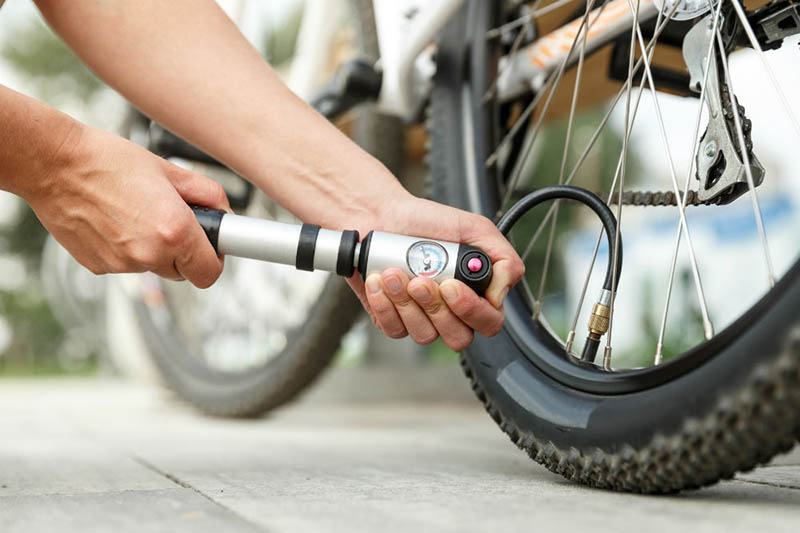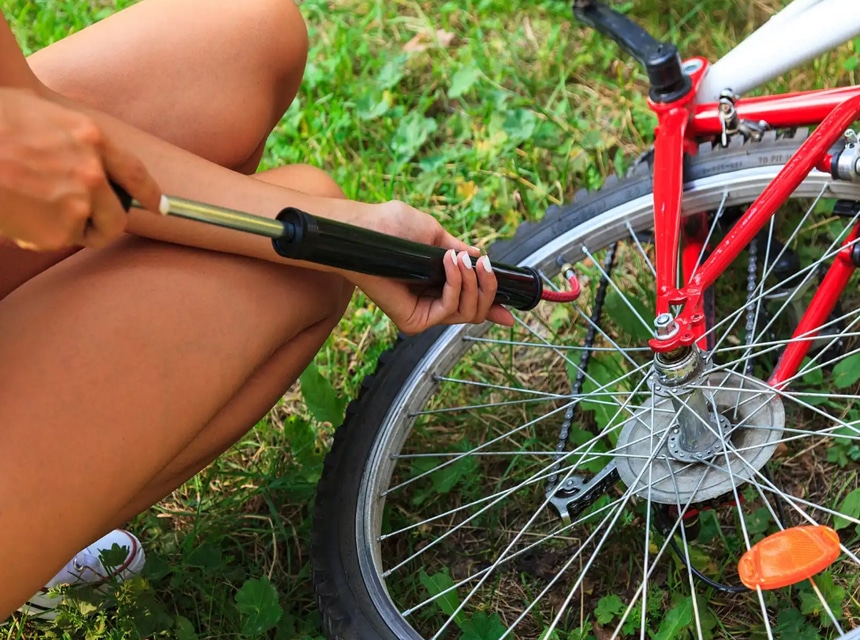The Significance of Properly Inflated Bike Tires
Maintaining the correct tire pressure in bike tires is crucial for several reasons. First, proper inflation significantly enhances safety, as it reduces the likelihood of tire blowouts or skidding, which could lead to accidents. Second, correctly inflated tires contribute to increased energy efficiency, as they encounter less rolling resistance, allowing cyclists to cover more distance with less effort. Lastly, maintaining the recommended tire pressure extends the tire lifespan, as under-inflated tires wear out more quickly due to increased friction and stress on the sidewalls.
Understanding Tire Pressure: Recommended PSI for Bike Tires
Tire pressure, measured in Pounds per Square Inch (PSI), plays a vital role in bike performance and safety. Properly inflated tires ensure optimal traction, stability, and comfort during rides. For most bikes, recommended PSI ranges from 80 to 130, depending on the tire type and rider’s weight. Mountain bike tires typically require lower PSI (around 25-50) to absorb shocks and provide better grip, while road bike tires need higher PSI (80-130) for reduced rolling resistance and increased speed.
Selecting the Right Pump for Your Bike Tires
Choosing the right bike pump can significantly impact the ease and efficiency of inflating bike tires. Various types of pumps cater to different user preferences and requirements. Floor pumps, with their large, stable bases and high-pressure capabilities, are suitable for frequent use and quick inflation. Hand pumps, on the other hand, offer portability and are ideal for on-the-go inflation needs. CO2 inflators provide rapid inflation but require refills after each use. Consider factors like ease of use, size, weight, and durability when selecting the perfect pump for your bike tires.
How to Use a Bike Pump: Step-by-Step Instructions
Using a bike pump to inflate tires may seem straightforward, but following a detailed guide can help ensure proper inflation and prevent potential damage. Begin by preparing the pump: extend the pump’s barrel, attach the hose, and ensure the pressure gauge is functioning correctly. Next, locate the valve on your bike tire and unscrew the cap. Attach the pump head to the valve, ensuring a secure connection. Start pumping slowly, monitoring the pressure gauge to avoid over-inflation. Once the desired PSI is reached, release the pump head, replace the valve cap, and store the pump safely.
Troubleshooting Common Issues During Bike Tire Inflation
Even with the right equipment, issues may arise during bike tire inflation. Leaks, for example, can result in slow or rapid air loss. To identify leaks, inflate the tire, apply soapy water to the tire and valve, and look for bubbles. If a leak is found, repair or replace the damaged tube or tire. Difficulty in seating the pump can be caused by misaligned valves or tight-fitting pump heads. To resolve this, ensure the valve is open and properly aligned, and use a lubricant to facilitate a smoother connection. Incorrect pressure readings can be due to faulty gauges or user error. Regularly calibrate your gauge and double-check the PSI during inflation to ensure accuracy.
Maintaining Your Bike Pump: Cleaning, Storage, and Repair
Proper maintenance of your bike pump ensures its longevity and optimal performance. Begin by cleaning the pump after each use, removing dirt and debris from the exterior and interior components. Use a damp cloth and mild detergent, avoiding harsh chemicals that may damage the pump. After cleaning, lubricate moving parts, such as seals and o-rings, to minimize wear and tear. When storing your pump, keep it in a cool, dry place, away from direct sunlight and extreme temperatures. Regularly inspect the pump for any signs of damage, and perform basic repairs, like replacing worn-out seals or o-rings, to maintain its functionality.
Popular Bike Pump Models: Reviews and Recommendations
Selecting the right bike pump can be a daunting task, given the variety of options available. Here, we review several popular bike pump models, considering factors like performance, durability, and user feedback. For those on a budget, the AMEYA Portable Bike Pump offers affordability and portability, making it an excellent choice for occasional users. The BV Bicycle Ergonomic Bike Floor Pump, while more expensive, boasts a sturdy design, accurate pressure gauge, and easy-to-use features, making it suitable for frequent riders. Lastly, the LEZYNE Pressure Drive Hand Pump is a versatile and compact option, perfect for cyclists who demand high performance in a portable package.
Staying Safe and Legal: Bike Tire Inflation Regulations and Tips
When inflating bike tires, safety and adherence to local regulations should be a priority. First, ensure that your tire pressure falls within the recommended PSI range for your specific tire type. Overinflation can lead to reduced traction, increased risk of punctures, and potential tire blowouts. Underinflation, on the other hand, can cause excessive tire wear, decreased energy efficiency, and increased rolling resistance. Additionally, some public bike-sharing programs have specific tire pressure guidelines to ensure user safety and maintain the longevity of their equipment. Always follow these guidelines and perform regular tire pressure checks to promote safe and enjoyable cycling experiences.







